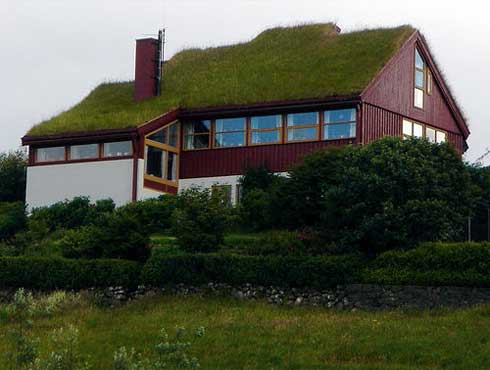After spending three weeks in Iceland, the CELL group has learned quite a bit about both the Icelandic culture, and various methods of enacting sustainability. Although most Icelanders have the luxury of pumping naturally hot water into their homes for heat, much of the United States is still burning gas or oil to provide warmth in the winter. Green roofs, also known as turf roofs or sod roofs, have the ability to mitigate some of the oil we burn. Green roofs also provide a whole slew additional sustainable benefits, and are fairly common in parts of Iceland.
During the winter months, the vegetative surface uses solar energy and acts as a thermal mass to store heat, keeping heat from an indoor system better insulated. On the other hand, green roofs can also cool a house during the warmer seasons. They can absorb much of the solar radiation, and retain rainwater to pull heat out of a house. This can reduce effects of heat islands when enacted on multiple homes in a single area. These roofs have the ability to filter heavy metals from rain water and absorb carbon dioxide as well. Additionally, they provide habitats for animals in city environments. What may be the most enticing incentive for this house covering alternative, they often last up to 50 years, while tiled roofs often need to be retiled after 20.
Jón Túmasón

